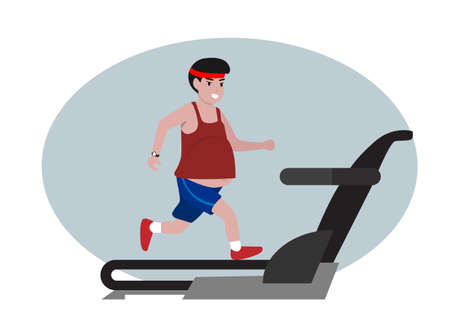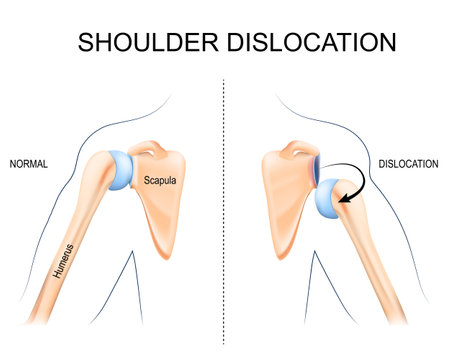1. Understanding the Importance of Nutrition in Shoulder Recovery
When you’re recovering from a shoulder injury or surgery, what you eat matters just as much as your rehab exercises. In the United States, we often focus on physical therapy, but sometimes forget that nutrition plays a huge role in healing. Good nutrition gives your body the fuel it needs to repair tissues, reduce inflammation, and get you back to your daily activities faster.
How Nutrition Supports Healing
After a shoulder injury, your body works overtime to repair damaged muscles, tendons, and ligaments. This process needs extra nutrients. A balanced diet supplies proteins for rebuilding tissue, vitamins and minerals for cellular repair, and healthy fats to help control inflammation.
Main Nutrients That Help Shoulder Recovery
| Nutrient | Role in Recovery | Everyday Food Sources (U.S.) |
|---|---|---|
| Protein | Builds and repairs muscle and connective tissue | Chicken breast, Greek yogurt, eggs, beans |
| Vitamin C | Boosts collagen production for tendon healing | Oranges, strawberries, bell peppers, broccoli |
| Omega-3 Fatty Acids | Reduces inflammation and supports joint health | Salmon, walnuts, chia seeds, flaxseed oil |
| Zinc | Aids immune function and tissue repair | Pumpkin seeds, beef, lentils, cashews |
| Vitamin D & Calcium | Supports bone strength during recovery | Dairy milk, fortified plant milks, cheese, leafy greens |
The Impact of Inflammation on Recovery
Inflammation is your body’s natural response to injury—but too much can slow down recovery. By choosing anti-inflammatory foods like berries, leafy greens, and fatty fish (think classic American favorites like grilled salmon), you help your shoulder heal without unnecessary swelling or pain.
Quick Tips for Better Nutrition During Recovery:
- Include protein at every meal—try scrambled eggs for breakfast or grilled chicken in your salad.
- Add colorful fruits and vegetables to boost vitamins and antioxidants.
- Stay hydrated with water instead of sugary drinks or soda.
- Avoid processed foods high in sugar and unhealthy fats—they can increase inflammation.
- If you have dietary restrictions or special needs (like being vegetarian or lactose intolerant), talk to a registered dietitian for personalized advice.
2. Essential Nutrients for Faster Healing
When recovering from a shoulder injury, your body needs the right nutrients to repair tissues, reduce inflammation, and build strength. Eating well can make a real difference in how quickly you get back to your daily activities. Let’s highlight some key vitamins, minerals, and macronutrients that are especially important for shoulder recovery.
Key Nutrients for Shoulder Recovery
| Nutrient | Main Benefits | Good Food Sources |
|---|---|---|
| Protein | Helps rebuild muscle and tissue Supports immune function |
Chicken breast, eggs, Greek yogurt, beans, tofu |
| Vitamin C | Promotes collagen production Speeds up wound healing |
Oranges, strawberries, bell peppers, broccoli |
| Collagen | Strengthens tendons and ligaments Aids joint health |
Bone broth, collagen supplements, chicken skin, fish skin |
| Omega-3 Fatty Acids | Reduces inflammation Supports joint flexibility |
Salmon, walnuts, chia seeds, flaxseeds |
| Zinc | Aids tissue repair Supports immune system function |
Pumpkin seeds, beef, cashews, chickpeas |
| Vitamin D & Calcium | Builds strong bones Supports muscle function and healing |
Dairy products, fortified plant milk, salmon, egg yolks (for Vitamin D); spinach and almonds (for calcium) |
How to Add These Nutrients to Your Diet
You don’t need fancy supplements to get these nutrients—just a few smart choices at the grocery store can help. For example:
- Add grilled salmon or chicken to salads for extra protein and omega-3s.
- Toss berries into your morning oatmeal or smoothie for a vitamin C boost.
- Try bone broth soup as a comforting source of natural collagen.
- Munch on a handful of walnuts or pumpkin seeds as an afternoon snack.
- If you spend most of your time indoors, ask your doctor about checking your vitamin D levels.
The Takeaway: Fuel Your Recovery With Smart Choices
Your body has amazing power to heal—especially when you give it the right building blocks. Focus on getting enough protein every day and include a variety of colorful fruits and veggies in your meals. Don’t forget healthy fats from fish or nuts! These nutrition tips can help speed up your shoulder recovery so you can get back to doing what you love.

3. Hydration and Its Role in Recovery
Staying well-hydrated is often overlooked, but it’s a key part of recovering from a shoulder injury. When you drink enough water, your body can better maintain joint health, manage inflammation, and repair tissues. Let’s break down why hydration matters so much during your recovery journey.
Why Is Hydration Important for Shoulder Recovery?
After a shoulder injury, your body goes into repair mode. Water plays several vital roles in this process:
- Joint Health: Water helps keep the cartilage around your shoulder joint cushioned and flexible, which supports smooth movement and reduces discomfort.
- Managing Inflammation: Proper hydration helps flush out toxins and waste products that can build up after an injury, helping to control swelling and pain.
- Tissue Repair: Your cells need water to transport nutrients and oxygen to injured tissues—this is how your body heals.
How Much Water Should You Drink?
The general guideline for adults is about 8 cups (64 ounces) of water per day, but you might need more if you’re active, sweating, or healing from an injury. Listen to your body; thirst is a sign you need more fluids.
Tips for Staying Hydrated
| Tip | How It Helps |
|---|---|
| Carry a Reusable Water Bottle | Makes it easy to sip throughout the day, whether at work or therapy sessions. |
| Add Flavor | A splash of lemon or some berries can make water more appealing if you find plain water boring. |
| Eat Water-Rich Foods | Fruits like watermelon, oranges, and cucumbers add hydration with extra vitamins. |
| Set Reminders | Use your phone or smart watch to remind yourself to take regular sips. |
Signs You Need More Water
- Dry mouth or lips
- Dark yellow urine
- Feeling tired or dizzy
- Poor concentration during rehab exercises
If you notice any of these signs, try increasing your water intake. Keeping hydrated is one simple step that can make a big difference as you work toward full shoulder recovery.
4. Smart Lifestyle Choices: Rest, Sleep, and Stress Management
When recovering from a shoulder injury, making smart lifestyle choices can significantly speed up your healing process. Many Americans juggle busy work schedules and family responsibilities, but prioritizing rest, quality sleep, and stress management is key to successful recovery. Here’s how you can adapt these habits to fit your daily routine:
Why Quality Sleep Matters for Shoulder Healing
Your body does its best repair work while you sleep. Getting 7-9 hours of restful sleep each night helps reduce inflammation and supports tissue repair in your shoulder. To maximize your sleep quality, try to stick to a consistent bedtime, keep electronic devices out of the bedroom, and create a calming nighttime routine—like reading or listening to soothing music.
Sleep Tips for Busy Americans
| Challenge | Practical Solution |
|---|---|
| Late work hours | Set an alarm for “winding down” time at least 30 minutes before bed. |
| Young children at home | Coordinate with your partner or support system to rotate nighttime duties. |
| Trouble falling asleep | Avoid caffeine after 2 p.m. and try guided meditation apps designed for sleep. |
The Power of Strategic Rest Periods
Rest doesn’t mean doing nothing all day—it means giving your shoulder targeted breaks from activities that strain it. If you have a desk job, use a timer to remind yourself to change positions every hour. If your job is more physical, ask your employer about modified duties while you heal. At home, let family members help with chores that involve heavy lifting or reaching overhead.
Sample Rest Strategies by Activity Level
| Lifestyle Type | Rest Suggestion |
|---|---|
| Sedentary (office-based) | Add gentle stretching during breaks; avoid leaning on injured arm. |
| Active (manual labor or caregiving) | Use supportive braces as recommended; delegate heavy tasks when possible. |
| Parents with young kids | Create a game where kids help by carrying light items instead of you. |
Managing Stress for Better Recovery
Stress can slow down healing by increasing inflammation in the body. Simple stress reduction techniques—such as deep breathing exercises, short walks outside, or mindfulness meditation—can make a big difference. Even five minutes a day can help reset your mind and promote recovery. Many Americans find success using free smartphone apps or joining virtual support groups to stay motivated.
5. Physical Activity and Safe Movement
Integrating Safe Exercises Into Your Daily Life
Staying active is important for shoulder recovery, but it’s crucial to choose safe movements that won’t make things worse. Americans often have busy schedules, so here are practical ways to add gentle exercises and smart movement habits to your day without risking re-injury.
Safe Shoulder Exercises You Can Do at Home or Work
| Exercise | Description | When/Where |
|---|---|---|
| Pendulum Swings | Lean over a table, let your arm dangle, and gently swing in circles. Helps loosen the shoulder. | Morning or after work, at home |
| Towel Stretch | Hold a towel behind your back with both hands and gently pull upward for a stretch. | After showering or before bed |
| Wall Crawls | Face a wall and “walk” your fingers up as high as is comfortable, then back down. | During breaks at work or home |
| Shoulder Blade Squeezes | Sit or stand tall and squeeze your shoulder blades together, holding for five seconds. | Sitting at your desk or during TV time |
Tips for Moving Safely Throughout Your Day
- Avoid heavy lifting: Skip carrying groceries on the injured side; use a cart or ask for help if needed.
- Modify household chores: Use lighter tools and take frequent breaks when cleaning or cooking.
- Adjust your workspace: Keep items within easy reach and avoid repetitive overhead movements.
- Pace yourself: Spread activities out over the week instead of trying to do everything in one day.
- Listen to your body: Stop any movement that causes sharp pain or discomfort.
The Importance of Regular Movement (But Not Overdoing It!)
Sedentary habits can slow down healing, but pushing too hard can cause setbacks. Try setting phone reminders to stretch gently every hour if you have a desk job. A short walk around the office or your neighborhood also helps boost circulation, supporting nutrition delivery to healing tissues. Remember, consistency—not intensity—is key during recovery.


